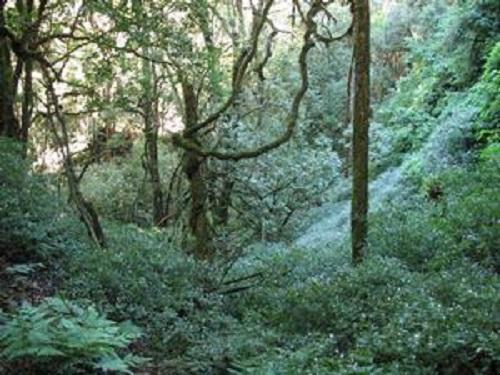Sun Guozheng
The aim of the project is to collect baseline information about population size, distribution patterns, and threats to western black crested gibbons in Yongde Daxueshan National Nature Reserve. Well targeted measures and recommendations will be made and offered to local reserve for gibbon and wildlife conservation based on this survey.

Recording the information of gibbon songs at listening point.
Furvogaster gibbons (Nomascus concolor furvogaster) is one of four subspecies of western black crested gibbon (Nomascus concolor) occurring only in the west of Mekong River with less than 150 individuals; and about 100 inhabit in Yongde Daxueshan National Nature Reserve, according to a survey result in 1997 (Wang et al., 2000). I took twice short visits to Yongde Daxueshan NNR twice between 2008 and 2009 to record gibbon songs and worked in the reserve for ten days each trip.

Gibbon habitat in Yongde Daxueshan NNR.
During my stay in field, I only heard 4 groups of gibbons but found 15 leg traps (ferrous clamps), an armed poacher and many abandoned camps of hunters in the reserve. Gun shots could be heard frequently at dawn in forest. An adult female gibbon was found dead with bullet holes on the body in 2009. I felt sad that they haven’t heard gibbon songs for some years after talking with forestry staff from other reserves where furvogaster gibbons live.
Furvogaster gibbons may be suffering the most serious threats in western black crested gibbons, it’s urgent to clarify their current status and take some well targeted measures before they become extinct. This survey will be carried in December of 2010; clarify the numbers of furvogaster gibbon groups in Yongde Daxueshan NNR; make a map for the distribution of each group; Make and offer well targeted measures and recommendations to local reserve for gibbon and wildlife conservation; and train more than 12 rangers of the reserve to monitor the population dynamics in a long term.